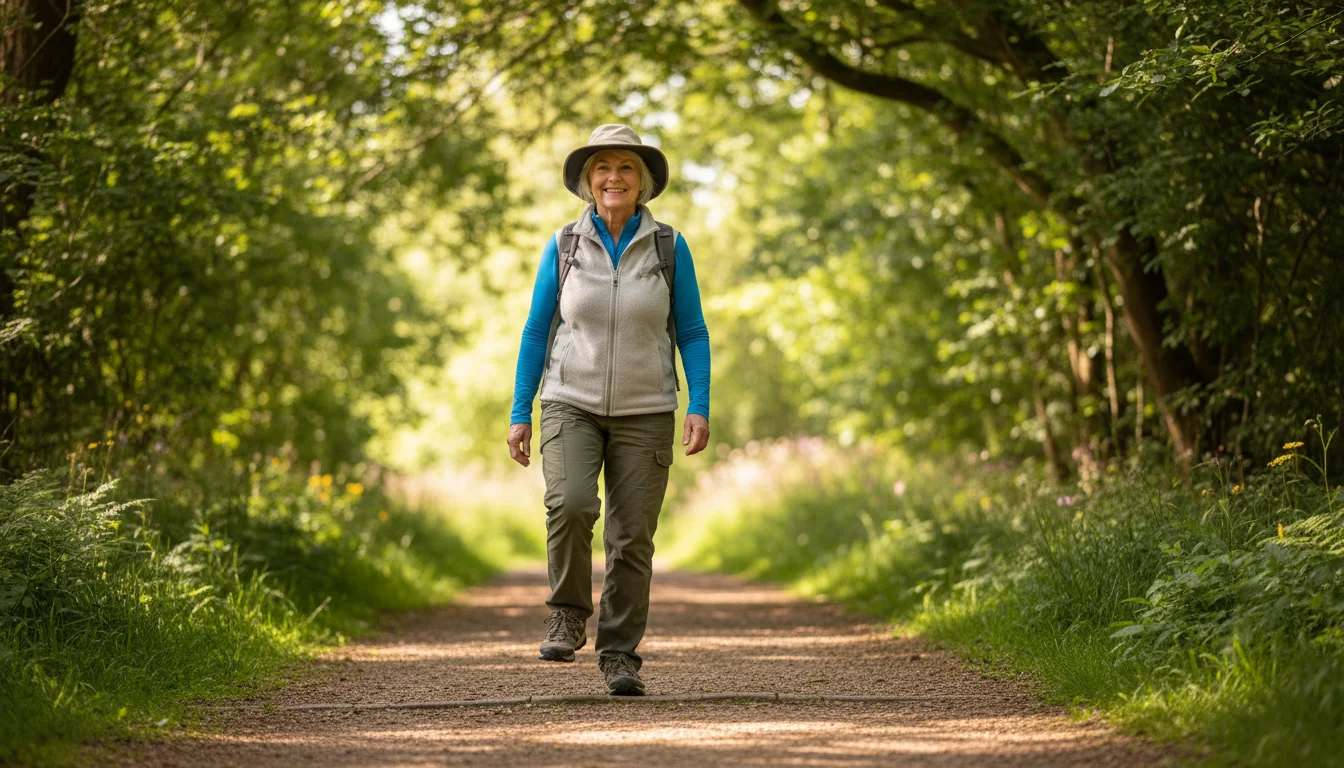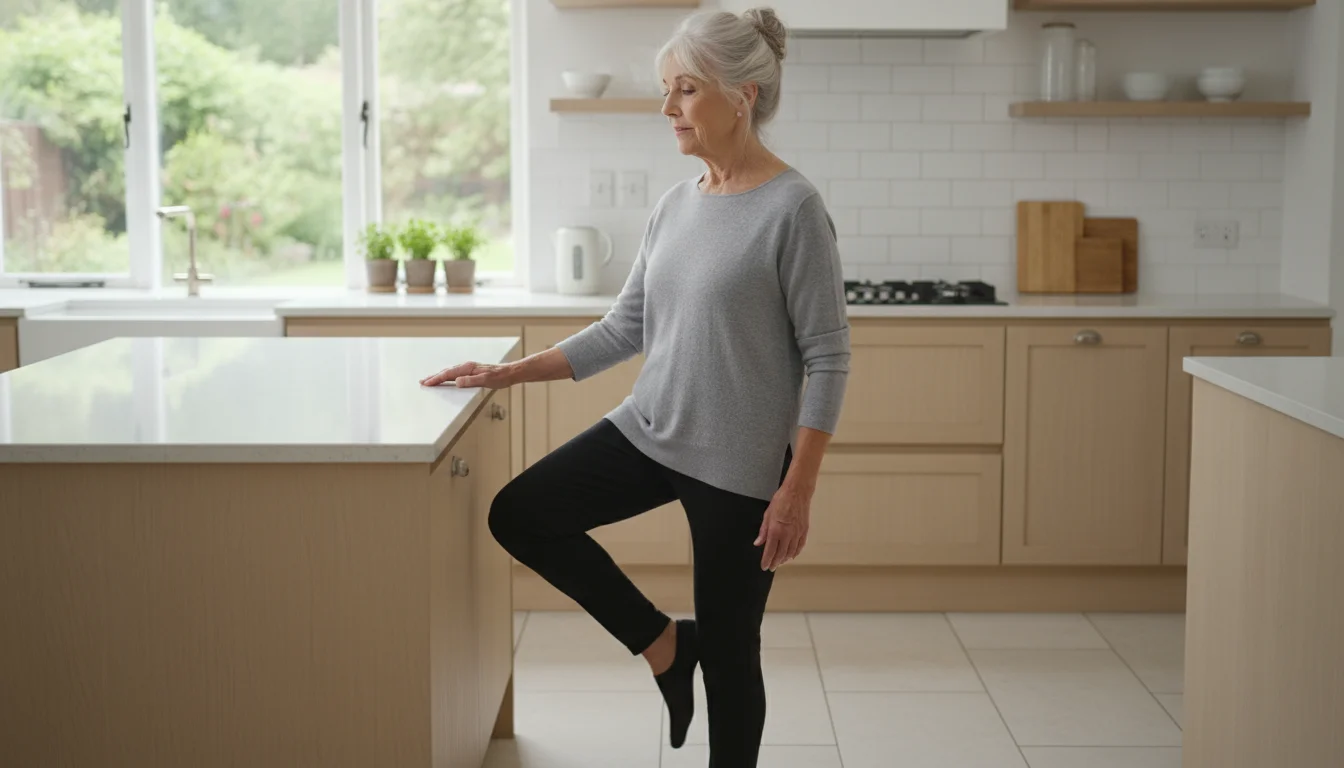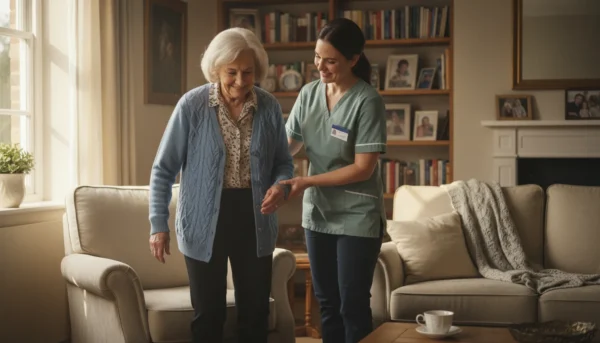
Understanding the Health Benefits (and Any Risks)
Incorporating gentle exercises into your daily life offers a wealth of benefits that extend far beyond simply making it easier to get around. These movements are a cornerstone of healthy aging, contributing to physical strength, mental clarity, and emotional resilience. Understanding these advantages can provide powerful motivation to get started and stay consistent.

The Positive Impacts of Mobility Exercises
Improved Balance and Stability: Perhaps the most critical benefit of mobility work is the reduction in fall risk. Exercises that challenge your balance in a safe, controlled way help train your body and brain to work together more effectively, making you steadier on your feet. Stronger leg and core muscles provide a stable foundation, helping you recover your balance if you stumble.
Increased Muscle Strength: We naturally lose muscle mass as we age, a condition known as sarcopenia. This can lead to weakness and fatigue. Low-impact exercises help counteract this process by strengthening the muscles that support your daily movements, such as getting out of a chair, carrying groceries, and walking up an incline.
Enhanced Joint Health and Flexibility: Motion is lotion for your joints. Gentle movement helps lubricate the joints by circulating synovial fluid, which can reduce stiffness and discomfort associated with conditions like arthritis. Regular stretching and range-of-motion exercises keep your joints flexible, allowing you to bend, reach, and twist with greater ease.
Better Bone Density: Weight-bearing exercises, even gentle ones like standing or walking, signal your body to build and maintain bone density. This is crucial for preventing osteoporosis, a condition that makes bones brittle and more susceptible to fractures. Authoritative health information for seniors is provided by the National Institute on Aging (NIA) and the Centers for Disease Control and Prevention (CDC), which both emphasize the importance of physical activity for bone health.
Boosted Mood and Mental Health: The connection between physical activity and mental well-being is undeniable. Exercise releases endorphins, which are natural mood elevators. It can also reduce feelings of anxiety and depression, improve sleep quality, and enhance cognitive function. Staying active provides a sense of accomplishment and control over your health, which is incredibly empowering. For more resources on this topic, you can consult the National Institute of Mental Health (NIMH).

Understanding and Mitigating the Risks
While the benefits are significant, it’s essential to approach any new physical activity with caution and awareness. The primary goal is to improve your health safely, not to create new problems. The main risks associated with senior fitness routines are falls and overexertion.
Risk of Falling: For exercises that challenge your balance, it is absolutely critical to have a sturdy support nearby. This could be a kitchen counter, the back of a solid chair, or a wall. Never perform a balance exercise in the middle of an open room without something to hold onto. Ensure your exercise area is free of clutter, rugs, or cords that could cause you to trip.
Risk of Overexertion: It can be tempting to do too much, too soon. This can lead to muscle strain, joint pain, or excessive fatigue. The golden rule is to listen to your body. Start slowly, with fewer repetitions, and gradually increase as you feel stronger. It’s better to do a little bit every day than to overdo it once a week. Pain is your body’s signal to stop. A mild muscle soreness a day or two after exercise is normal, but sharp, shooting, or persistent pain is not.
Before beginning any new exercise program, it is always recommended to speak with your doctor or a physical therapist. They can help you tailor a routine that is safe and appropriate for your specific health conditions and fitness level.


















